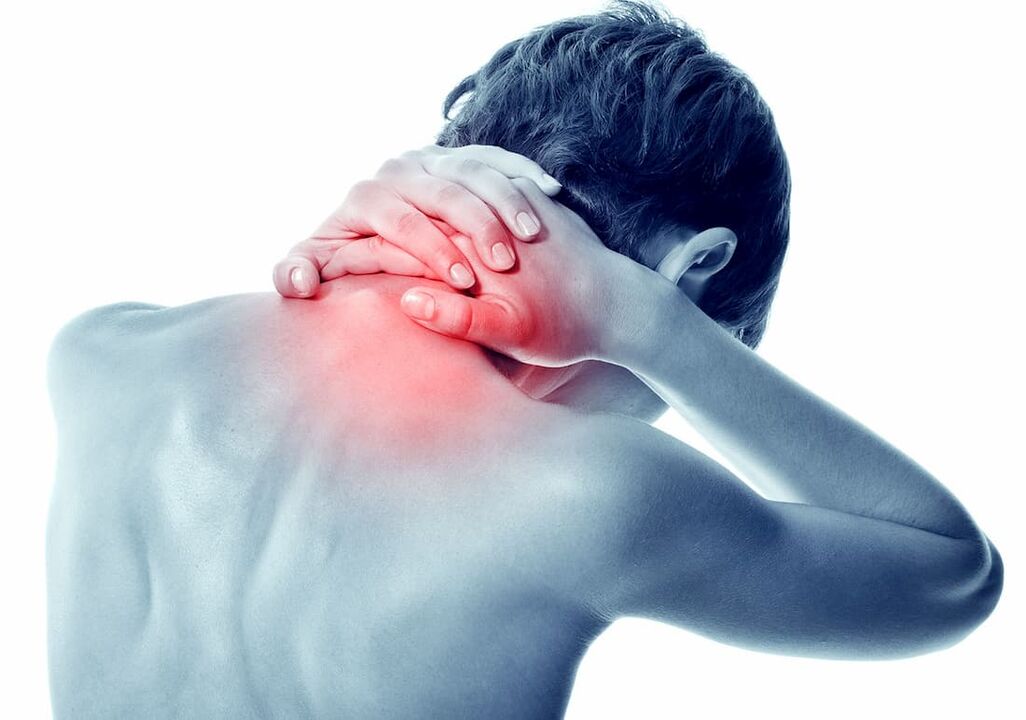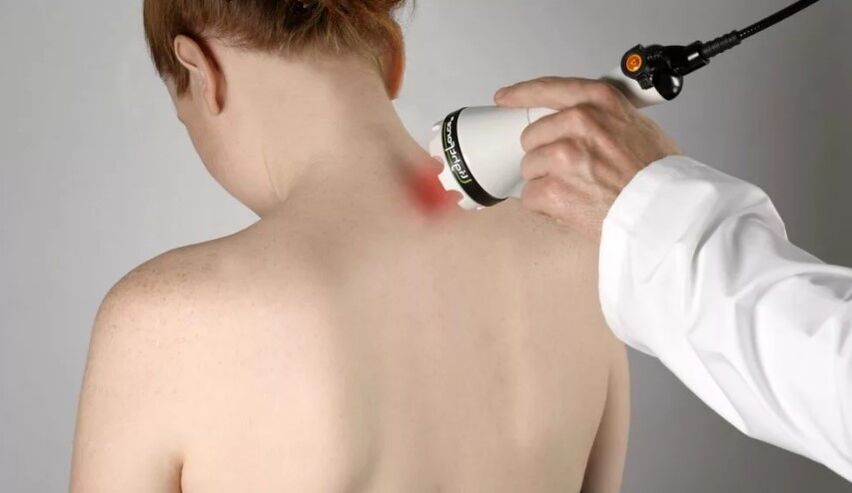
Cervical osteochondrosis is a chronic dystrophic disease in which the thin disc is located between the vertebrae, followed by their bone tissue.When the degenerative process takes place, the surrounding structure is involved.This is the cause of the overall development of the true complex symptoms -actually subjugating the life of the patient.
General information
The intervertebral disc is made up of gel -shaped nucleus and compact fibrous rings around it, covered with a cartilage layer above.They perform shocking functions, preventing vertebral damage during walking, walking and jumping, and also contributing to mobility and flexibility of the entire spinal cord.
In the process of natural aging, as well as in increased load conditions, there is a gradual decrease in the height of the intervertebral disc.The metabolism at its core is interrupted, cracks appear in the surrounding ring.Prutches disc - protrusion and hernia appear.As the disease progresses, the tissues and bones of the cartilagin are involved in it, osteophytes occur - bone growth that causes the limited mobility and the pronunciation syndrome.
Because pathological changes occur around the spine and its roots, this leads to their compression and inflammation, as well as the development of muscle cramps.As a result, a person has symptoms of characteristics in which the disease can be suspected.
Cause
Cervical spinal osteochondrosis refers to multifactorial disease.It arises from the overall background of complex factors, each exacerbating the pathological flow.A list of reasons includes:
- excess weight;
- SEDENTARI LIFE;
- Jobs are inactive;
- incorrect posture;
- Chronic diseases of the musculoskeletal system (scoliosis, flat feet) that contribute to the distribution of uneven load on the spine;
- Congenital pathology of spinal column development, as well as injury;
- Excessive, recurrent load on the spine;
- Descent tendency.
Symptoms and syndrome
Symptoms of cervical osteochondrosis do not appear instantly and, often, are evident as other diseases.
The most common signs include:
- Dizziness: as a rule, with osteochondrosis, it is systemic, as if someone around the object rotates before his eyes;
- Pain in nape, neck, collar zone: its intensity depends on the level of disease progression;Light and episodic in the early stages, it spreads all over the head and acquired a continuous character;Periodic attacks become unbearable, as a result one cannot move his head;
- Sound or ring in the ear: arises when the position changes after a long period of immobility, often accompanied by dizziness;
- feelings of lack of air, inability to breathe long;In severe cases, severe shortness of breath develops;
- Nausea and vomiting: associated with blood circulation disorders in certain zones of the brain, increasing when trying to turn the head on;
- Reducing vision, flashing flies or fog before the eyes: showing insufficient brain blood supply;arises with advanced stages of the disease;
- fluctuations in blood pressure, which is poor for correction with medication;
- Fatigue suddenly caused by blood vessel spasms;
- Feelings of bumps in the throat, pain, dryness, problems with swallowing: often one of the first signs of pathology;
- pain in the shoulder joint;
- Fingerprints.
In addition to the general signs of cervical osteochondrosis, some of the characteristics of the disease syndrome are distinguished.
Vertebral syndrome
Symptom complexes are associated with bone damage and cartilage.She includes:
- violations of mobility in the cervical region;
- pain in turning heads;
- X -The damage to the vertebra and the space between them.
Vail arterial syndrome
Symptoms are caused by narrowing or spasm of the vertebral artery which is partly responsible for the blood supply to the brain.It is shown with the following signs:
- noise in the ear;
- dizzy;
- jumping in blood pressure;
- nausea and vomiting;
- headache;
- visual disorders;
- decrease in performance;
- sleepy;
- Faint.
Cardial Syndrome
Resembling a condition with damage to the heart muscle and includes:
- pain or burning sensation behind the sternum;
- weakness and fatigue;
- Pulse Rapid.
Rook Syndrome
This condition is associated with damage (compression or pinching) of the nerve roots that arise from the vertebral column in the cervical region.Depending on the level of defeat, one may feel:
- numbness or pain in the back of the head;
- Language stupidity;
- Pain in the collarbone, difficulty swallowing, hiccups;
- discomfort in the growing shoulder area with hand movements;
- pain in the blade area and lower arm;
- numbness from index and middle finger;
- Ring fingers and small fingers.
Often, some nerve roots are involved in the pathological process at once, as a result of some characteristic symptoms observed at the same time.
Phase
In the development process, cervical osteochondrosis surpasses four stages (degrees), which determines the severity of the symptoms and general conditions of the patient.
- Stage 1. Intervertebral disc thickness is slightly reduced.Symptoms are not present, sometimes there is little discomfort in the neck, for example, with long accommodation in an uncomfortable position.
- Stage 2. The height of the disc becomes smaller, the growth of the pathology of the cartilage begins, the protrusion (protrusion) occurs.The pain becomes stronger, the stiffness in the cervical region combines.
- Stage 3. The fibrous ring surrounding the core of the disc is torn, the intervertebral hernia is formed.The spinal column appears to be defective, the risk of dislocation and the vertebral subluxation increases.The pain becomes constant, the symptoms of other osteochondrosis combine.
- 4th stage.In the spinal column, irreversible changes occur: bone growth appears, intervertebral discs are replaced by scar tissue and loss of ability to pay off the load.Symptoms become significant and have a significant effect on the patient's lifestyle and well -being.The quality of life is reduced.
Diagnostics
To find the cause of pain or dizziness, patients can contact a doctor of various expertise: therapist, cardiologist, gastroenterologist, neurologist.To diagnose osteochondrosis, a comprehensive examination is required, which includes:
- X -ray and tomography calculated only effective in the late stages of disease development, when the change becomes clear;
- Magnetic resonance tomography: due to the high levels of visualization, even allowing you to see even the initial changes;Currently, it is a major method of diagnosis;
- Head and Neck artery duplex scanning: allows you to evaluate the quality of blood flow, identify the narrow vessels;Used to determine the cause of headaches and dizziness.
Mandatory studies and patient examination, determination of pain zones and spinal column mobility, evaluated, reflex quality is performed.For the diagnosis of differentiation with other diseases with the same symptoms, it can be prescribed:
- ECG, ultrasound liver;
- daily monitoring of ECG and blood pressure;
- X -ray chest organ;
- Narrow Expert Consultation: Cardiologist, Laura.
Treatment
Treatment of cervical osteochondrosis requires an integrated approach and includes:
- medical effects;
- physiotherapy;
- Physiotherapy physical education;
- Massage;
- Surgical treatment.
Drug
The main goal of drug treatment: to relieve pain and dizziness, restore normal functioning of the nerve root, and also, if possible, stop or slow down the destruction of cartilage tissue.Depending on the circumstances, they are set:
- Anti -steroidal anti -steroidal drugs: aimed at relieving pain and inflammation;They are used in tablets, injections, ointments, plaster;
- Steroid drugs: also used to relieve inflammation with NSAID inefficiencies;
- Musorelaxants: Medicines that eliminate reflex muscle cramps, due to reduced pain and improved blood circulation;
- Vitamin B in the form of injection or tablet drug: contributes to the increase in nerve impulses;
- Sedative with severe pain syndrome to improve sleep and reduce emotional components of pain;
- Anti -reduced agents when pinching nerve roots;
- Chondroprotectors: drugs that contribute to the recovery of cartilage tissue.
Depending on the symptoms, medicines can also be prescribed to improve micro -circulation in the brain vessels, medicines that prevent nausea and dizziness, etc.
Treatment Non -Drug
Unused treatment methods are used outside of severity.Depending on the clinical situation, it is used:
- Physiotherapy:
- laser therapy;
- magnetotherapy;
- UHF-FREE;
- Phonophoresis and electrophoresis;
- Massage;
- Physiotherapy physical education;
- acupuncture;
- manual therapy;
- Underwater attraction.
Non -Drug treatment helps reduce the severity of the symptoms and reduces the frequency and severity.It acts indirectly:
- increase blood supply to affected areas, metabolism and regeneration processes;
- increase the effects of the drug;
- Encourage to strengthen the muscle frame and stabilize the spinal column;
- reduce the load on the vertebrate;
- Eliminates muscle cramps and blocks.
Surgical

The help of the surgeon is required in the sophisticated cases of the disease, when the drug method is ineffective.Some operations are now used:
- Disc hernia surgery (microdiscectomy, endoscopic or transfaset surgery);
- Laminectomy: removal of spinous process or vertebral gate, in which the burden on the spinal cord is reduced;
- Nucleoplasty: removal of hernia by removing part of the intervertebral disc core.
It is important to remember that only a doctor can decide how to treat cervical spinal osteochondrosis.The scheme is individually arranged, taking into account the level of the disease, the pathology included and the individual characteristics of the patient's body.
Complication
Osteochondrosis causes the most important violation of the structure: blood vessels and nerves.Without treatment, the disease can cause the following complications:
- ischemic stroke;
- loss of sensitivity or function of hand motor;
- difficulty swallowing;
- violation of the thyroid gland;
- Significant loss or decrease in visual acuity.
In addition, the loss of disc and intervertebral joints leads to significant limitations of neck mobility.
Prevention
If you pay attention to the prevention of cervical osteochondrosis, even with existing changes, their development will slowly slow down.The doctor recommends:
- leading an active lifestyle, preventing hypodynamia;
- minimize or exclude severity;
- sleep on mattresses and orthopedic pillows;
- Regularly heating if necessary for old work on the computer.
The perfect sport for osteochondrosis is to swim.Water unloads spinal columns, and active movement contributes to the formation of muscle frames.


















